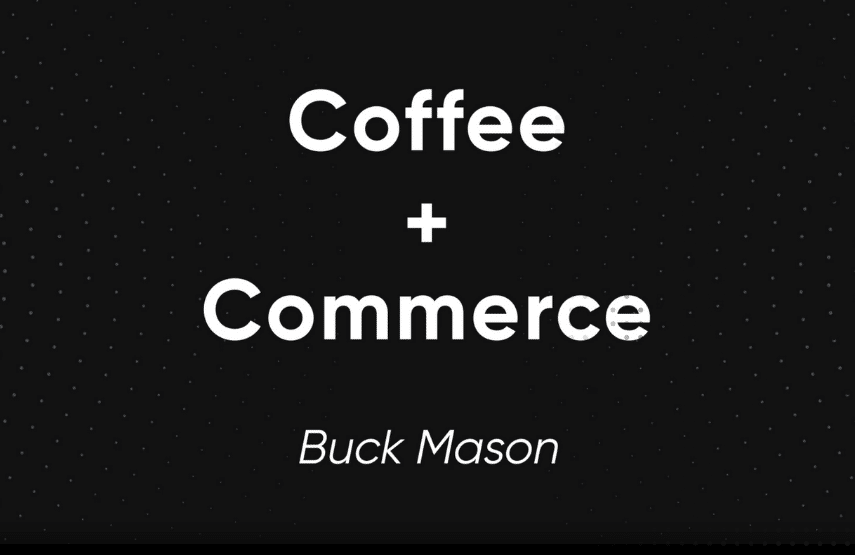Breaking Down Buck Mason’s E-Commerce Site [Video]

In this episode of Coffee + Commerce we break down Buck Mason’s e-commerce site with Faisal Masud. Faisal is our CEO here at Fabric and was previously the director of AmazonBasics and the CTO at Staples.
In this episode, he identifies opportunities for optimizations on buckmason.com that sells modern American clothing for men—everything from slub cotton tees to straight-fit jeans made from Japanese denim.
Without relying on VC funding, Buck Mason went from doing $4,000 per month in sales in 2014 to over $50 million in sales in 2019. By implementing the changes recommended here, Buck Mason can accelerate digital growth.
[toc-embed headline=”Key Takeaways”]
Key Takeaways
- [0:07] Any kind of popup—in this case, an email request form on the homepage—is an obstruction in the visitor’s buying journey. Let visitors browse and explore products before even considering triggering a popup. If anything, a popup should be used to incentive visitors to stay who would have otherwise left.
- [0:31] Show off your best products on the homepage with large images and close-ups of the material and product design. Show the products being worn/used. Highlight popular categories. Use a top navigation that makes browsing easy. Don’t make visitors rely on search functionality.
- [0:38] Make anchor text and/or images for category links in the site navigation align with what visitors see when they land on the associated category page. When browsing Buck Mason, long sleeve crews appeared after clicking on an image of a hoodie in the site nav.
- [1:08] On category pages, make it easy for visitors to look at product images and variations so they feel confident enough to “Quick Add” an item to their shopping cart. Buck Mason’s e-commerce site could benefit by enlarging color swatches/buttons beneath product images and adding a chevron so visitors can easily browse images/variations.
- [1:33] Add height and weight details about the models who are wearing the clothing in product images to give visitors a better idea about how small or large items run.
- [1:51] Make it easy for visitors to contact you with questions. Email contact methods are outdated. Add chat functionality instead.
- [2:02] For desktop shopping experiences, make use of space above the fold. On Buck Mason’s site there’s an opportunity to move product details above the fold to fill the excess of white space.
- [2:06] When adding content and functionality for new features like curbside pickup, don’t take visitors off the PDP. When a visitor clicks the curbside pickup option on Buck Mason’s site, they are taken to a new page. Instead, use popups/interstitials to explain new features like this.
- [2:20] Optimize your live chat functionality. Ensure concurrent connections. Tell visitors when customer service reps have joined the chat. Ensure reps are validating info that’s on the PDP. (When shopping Buck Mason, the rep said that clothing ran true to size when the PDP said otherwise.)
- [2:40] Make the shopping cart appear when a visitor adds an item to their cart. Add product recommendations inside the cart like Buck Mason does, but don’t take visitors out of the checkout flow when the recommended item is clicked.
- [3:38] Have customer service reps managing live chat follow up with visitors and ask them if there’s anything specific they need help with. On Buck Mason’s site, there was never any follow-up after asking about the fit of the clothing item.
- [4:07] Buck Mason supports Apple Pay, Amazon Pay, and PayPal. These are the three most popular quick checkout methods that all e-commerce stores should support.
- [4:15] When visitors are in the checkout flow, don’t tempt them to exit it by leaving in top and bottom navigation links. The only way visitors should be able to get out of the checkout flow is with a browser back button.
- [4:44] Make the shipping rate (e.g. free shipping) that appears across the website and inside the cart be evident in the checkout flow. On Buck Mason’s site, free shipping is offered but not clearly honored on the checkout page.
To make changes based on these recommendations and upgrade your e-commerce site, you’ll need to evolve to a headless commerce setup. This makes it easy to add new e-commerce functionality and features while maintaining full control over site experience and design. To learn more about this approach to e-commerce, check out Fabric.

Content marketer @ fabric. Previously marketing @ KHON-TV and Paramount Pictures.